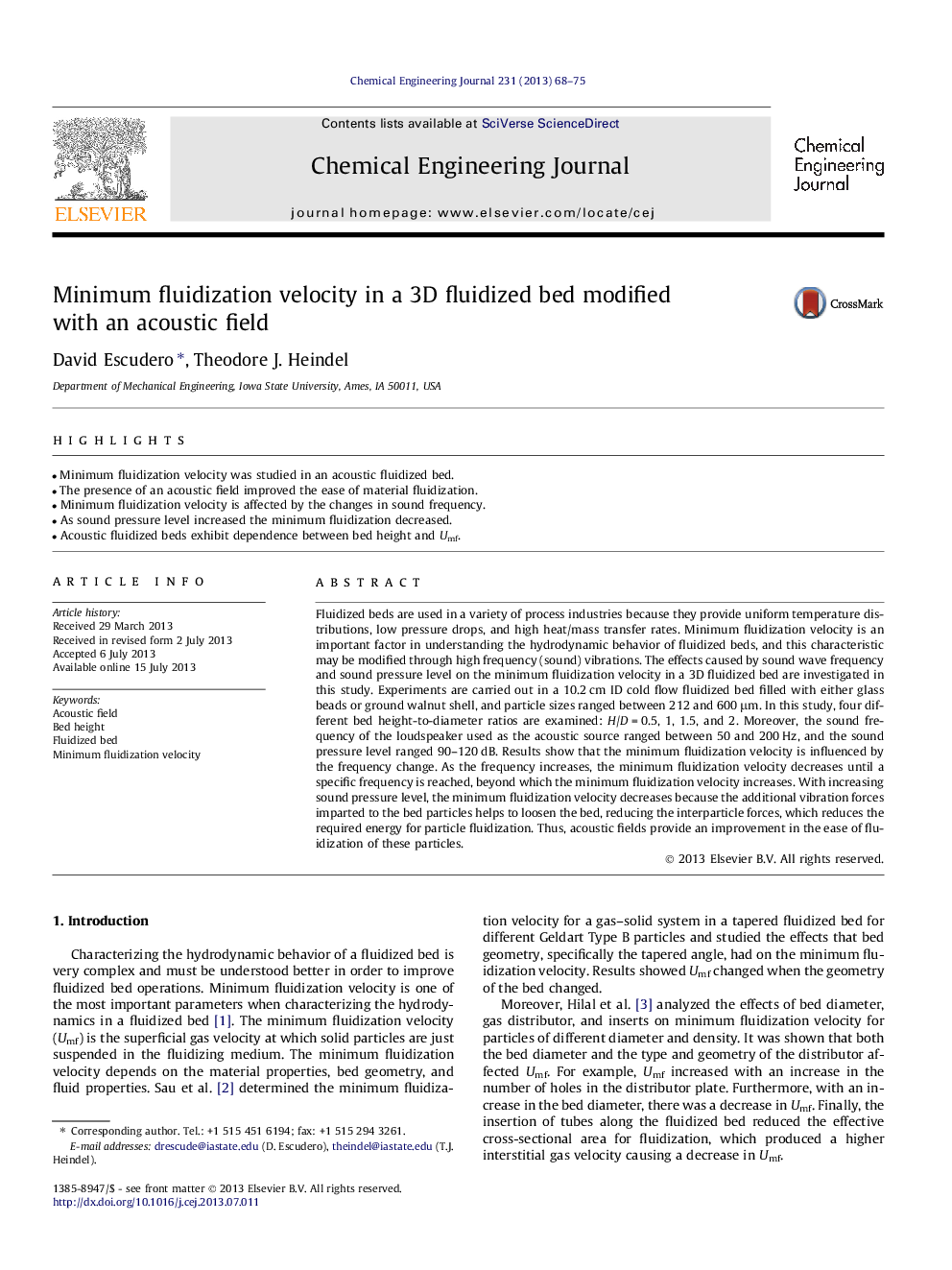| کد مقاله | کد نشریه | سال انتشار | مقاله انگلیسی | نسخه تمام متن |
|---|---|---|---|---|
| 148294 | 456408 | 2013 | 8 صفحه PDF | دانلود رایگان |

• Minimum fluidization velocity was studied in an acoustic fluidized bed.
• The presence of an acoustic field improved the ease of material fluidization.
• Minimum fluidization velocity is affected by the changes in sound frequency.
• As sound pressure level increased the minimum fluidization decreased.
• Acoustic fluidized beds exhibit dependence between bed height and Umf.
Fluidized beds are used in a variety of process industries because they provide uniform temperature distributions, low pressure drops, and high heat/mass transfer rates. Minimum fluidization velocity is an important factor in understanding the hydrodynamic behavior of fluidized beds, and this characteristic may be modified through high frequency (sound) vibrations. The effects caused by sound wave frequency and sound pressure level on the minimum fluidization velocity in a 3D fluidized bed are investigated in this study. Experiments are carried out in a 10.2 cm ID cold flow fluidized bed filled with either glass beads or ground walnut shell, and particle sizes ranged between 212 and 600 μm. In this study, four different bed height-to-diameter ratios are examined: H/D = 0.5, 1, 1.5, and 2. Moreover, the sound frequency of the loudspeaker used as the acoustic source ranged between 50 and 200 Hz, and the sound pressure level ranged 90–120 dB. Results show that the minimum fluidization velocity is influenced by the frequency change. As the frequency increases, the minimum fluidization velocity decreases until a specific frequency is reached, beyond which the minimum fluidization velocity increases. With increasing sound pressure level, the minimum fluidization velocity decreases because the additional vibration forces imparted to the bed particles helps to loosen the bed, reducing the interparticle forces, which reduces the required energy for particle fluidization. Thus, acoustic fields provide an improvement in the ease of fluidization of these particles.
Journal: Chemical Engineering Journal - Volume 231, September 2013, Pages 68–75